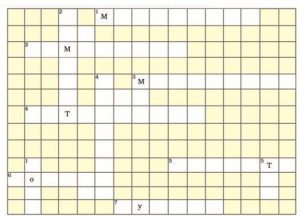5.2 TEXT QUESTIONS :
1. Multiple choice questions :
i) Which one of the following minerals is formed by decomposition of rocks , leaving a residual mass of weathered material ?
a) Coal
b) Bauxite
c) Gold
d) Zinc
ii) Koderma , in Jharkhand is the leading producer of which one of the following minerals ?
a) Bauxite
b) Mica
c) Iron ore
d) Copper
iii) Minerals are deposited and accumulated in the stratas of which of the following rocks ?
a) Sedimentary rocks
b) Igneous rocks
c) Metamorphic rocks
d) None of the above
iv) Which one of the following minerals is contained in the Monazite sand ?
a) Oil
b) Uranium
c) Thorium
d) Coal .
Ans: i) a ii) b iii) a iv) c .
2. Answer the following questions in about 30 words :
i) Distinguish between the following in not more than 30 words .
a) Ferrous and non-ferrous minerals .
Ans:
| Ferrous minerals | Non-ferrous minerals |
| Ferrous minerals provide a strong base for the development for metallurgical industries . They include iron ore and manganese . |
Non-ferrous minerals play an important role in a number of metallurgical , engineering and electrical industries . They include copper , bauxite , lead , zinc and gold . |
b) Conventional and non-conventional sources of energy .
Ans:
| Conventional sources of energy | Non-conventional sources of energy |
| Conventional sources are those which can be used only once and cannot be reused like , coal , petroleum , natural gas , electricity (both thermal and hydel) | Non-conventional sources are those which can be used again and again . They include solar , biogas and atomic energy . |
ii) What is a mineral ?
Ans: Mineral is a homogenous , naturally occurring substance with a well defined internal structure .
iii) How are minerals formed in igneous and metamorphic rocks ?
Ans: In igneous and metamorphic rocks minerals occur in the cracks , crevices , faults or joints . They are formed when minerals in liquid / molten and gaseous forms are forced upward through cavities towards the earth’s surface . They cool and solidify as they rise . Tin , copper , zinc and lead are obtained from igneous or metamorphic rocks .
iv) Why do we need to conserve mineral resources ?
Ans:
i) The geological process of mineral formation is quite slow in comparison to the present rate of consumption .
ii) Mineral resources are finite and non-renewable .
3. Answer the following questions in about 120 words :
i) Describe the distribution of coal in India .
Ans:
i) India’s coal fields (nearly 75%) are located in the north eastern part of the southern peninsula . They mainly lie in the Damodar river valley region (Jharkhand and West Bengal) Orissa , Chhattisgarh and Madhya Pradesh .
ii) Coal deposits also occur in some other river valleys such as Mahanadi , Godavari , Son , Tawa , Wardha and so on . The states such as Andhra Pradesh , Maharashtra , Assam , Uttar Pradesh also have notable coal reserves .
ii) Why do you think that solar energy has a bright future in India ?
Ans: Solar energy has a bright future in India because :
i) India is a tropical country and receives sunlight in abundance throughout the year .
ii) Solar plants can be easily established in rural and remote areas .
iii) It will minimise the dependence of the rural households on firewood and dung cakes which in turn will contribute to environmental conservation and adequate supply of manure in agriculture .
ACTIVITY:
Fill the name of the correct mineral in the crossword below :
| ACROSS | DOWN |
| 1. A ferrous mineral (9) | 1. Found in placer deposit (4) |
| 2. Raw material for cement industry (9) | 2. Iron ore mined in Bailadila (8) |
| 3. Finest iron ore with magnetic properties (9) | 3. Indispensable for electrical industry (4) |
| 4. Highest quality hard coal (10) | 4. Geological Age of coal found in north east India (8) |
| 5. Aluminium is obtained from this iron ore (7) | 5. Formed in veins and lodes (3) |
| 6. Khetri mines are famous for this mineral (6) | |
| 7. Formed due to evaporation (6) |
Ans:
ACROSS :
1. Manganese 2. Limestone 3. Magnetite 4. Anthracite
5. Bauxite 6. Copper 7. Gypsum .
DOWN :
1. Rock 2. Hematite 3. Coal 4. Tertiary 5. Tin .

